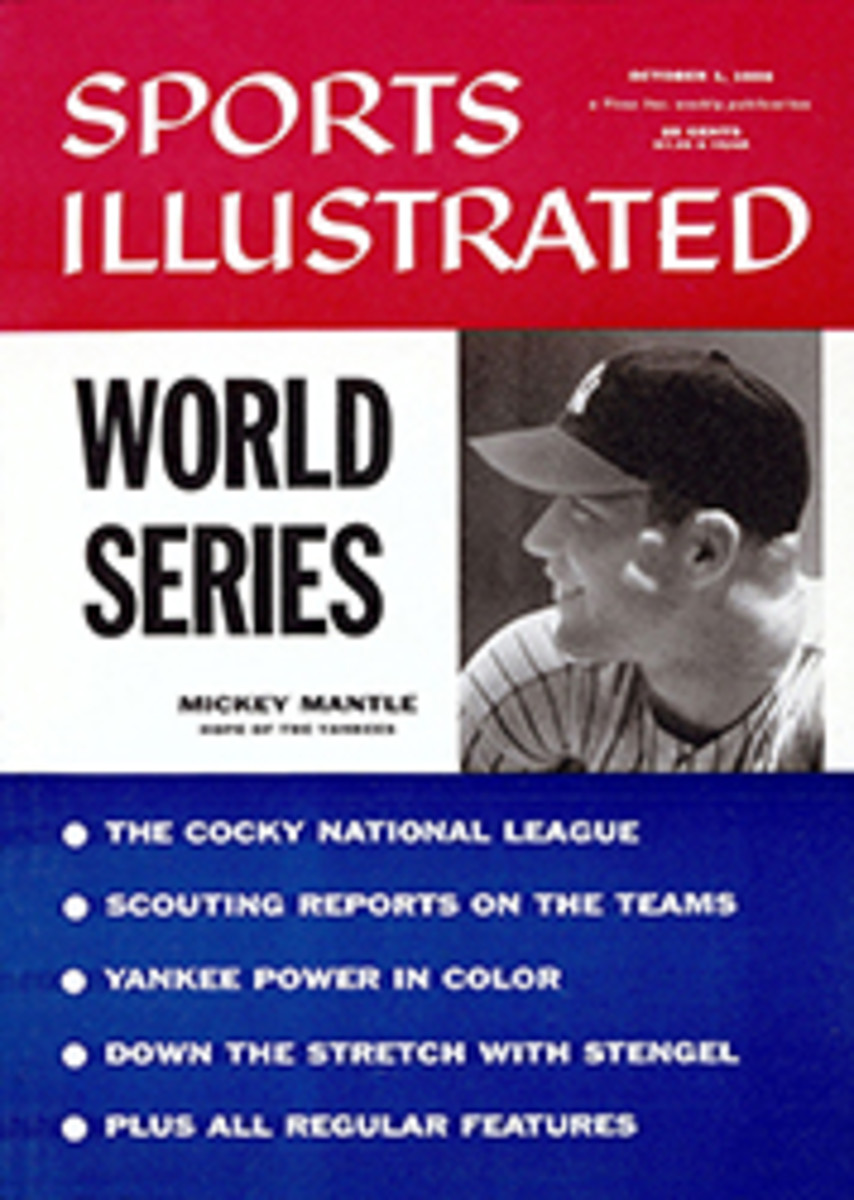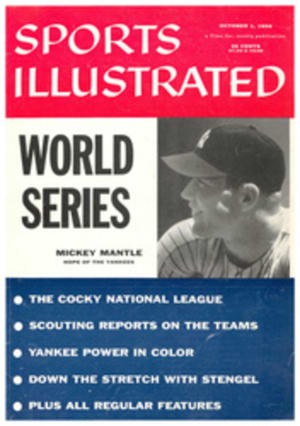
HERMAN HICKMAN SAYS:
The big news so far is that the era of ground-bound, grind-it-out, run-it-down-their-throats football is slowly but surely coming to an end. Opening day from coast to coast served notice that football '56 is shedding the shackles of conservatism which have gripped the game for the past few years.
There is a realization that the basic split-T without variations is not a magic cure-all. Based on the premise of a first down every three downs, there must be a minimum of mistakes. Because of the fast-hitting handoffs on the dive-bucks and the blind pitchouts from the option play, fumbles are prevalent, especially in early-season games. Theoretically it is an enigma. The inside attack is built on speed and quick explosive contact of the offensive linemen. The outside attack is delayed, and in its basic pattern has only one play, the pitchout from the quarterback to the off-halfback on the option. If the defensive end plays the quarterback, then he pitches out to the halfback for the end run. Conversely, if the end works to the outside then the quarterback keeps and runs inside. Passing patterns are of the running variety. Most of the split-T teams, except Oklahoma, have either ignored or failed to capitalize on this feature of the attack which is one of the most difficult plays in football to stop. It is my belief that without the proper blend of the running passes as an integral part of the offense, the concentration of defenses will be too much for the out-and-out ground attack. The old game maxim: "Against equal opposition a drive of more than 50 yards is seldom successful" will again be Q.E.D.
The "gap eight" as diagramed can be mighty disconcerting to a dedicated driving attack. This alignment precludes blocking any two men at the point of attack. Used in short-yardage situations "when you know the run is coming," it is most effective.
The use of the venerable "seven and a box" (see diagram), long laid away with the moleskins of yesteryear and considered the best of all defenses against a pure running attack, will again be in evidence. The seven men up front, burdened only with the ground game, will force many teams to go to the air or to flanker formations.
The "man-on-man six" manufactured at West Point in 1946 as a measure to stop the first edition of the Oklahoma split-T—and it did—is being talked about in select circles. The front six, hit—but do not penetrate—and slide with the play. It is dynamite, with two exceptions, the quick end run and flanker formations.
Mix in the usual ingredients of the "Oklahoma" (see diagram) and "umbrella," "shoot" a few line backers every now and then, and the infantry will be asking quickly for air support or, at least, a deployment of skirmishers.
Once in the salad days of my coaching career, I was diagraming some defensive maneuvers in the presence of my former coach at Tennessee, General Bob Neyland. Turning for his expected approval, I was met with: "Herman, I guess all those defenses must be pretty good, but there is just one thing that you've got to remember: in order to be a successful coach you must have men instead of X's and O's." And oh 'tis true, 'tis true.
DIAGRAM
SEVEN AND A BOX is an old defense finding new favor as a stopper for split-T running.
DIAGRAM
GAP EIGHT will stop any running attack but it is extremely vulnerable to passing game.
DIAGRAM
OKLAHOMA FIVE, a standard against split-T, can be varied on signal at the last moment.

